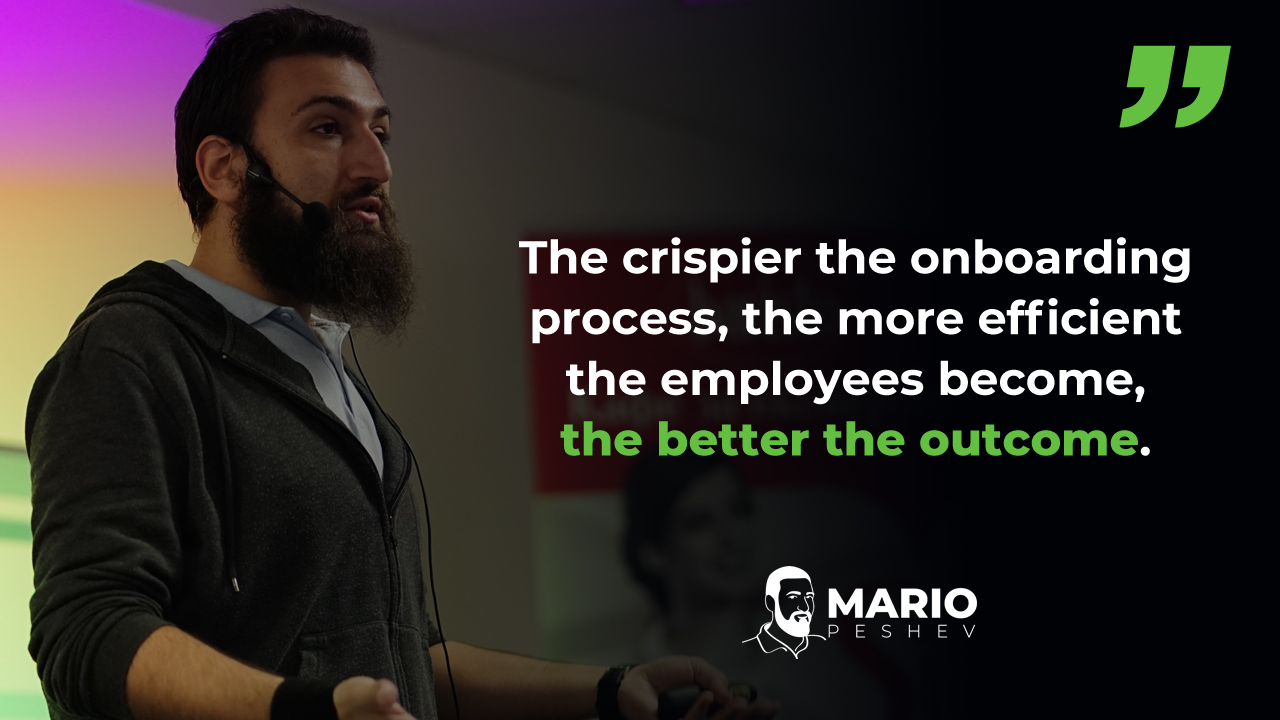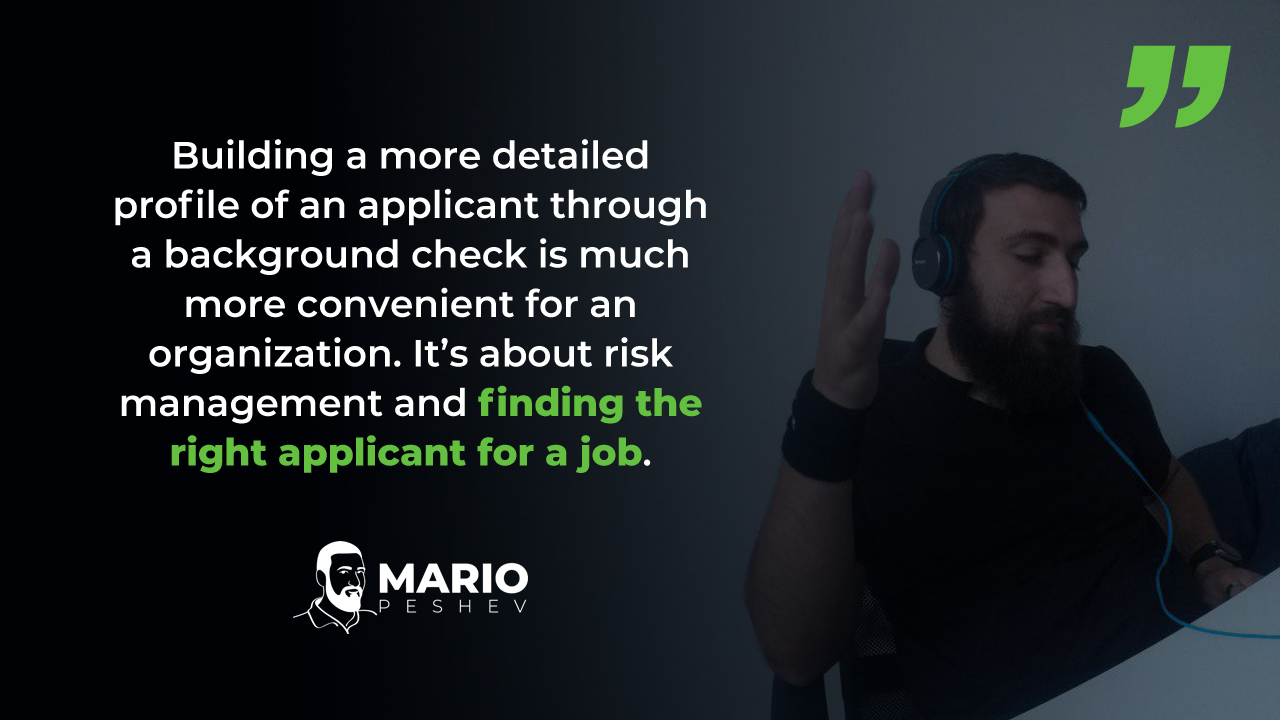Onboarding new employees is an essential part of the recruitment process. Skipping this requirement can backfire big time.
But here’s the thing: onboarding a new hire takes months until reaching efficiency. Hiring the wrong fit is often a 5-figure investment (and past $100K for some roles), considering mentorship, training, and involving other team members and management in the process.
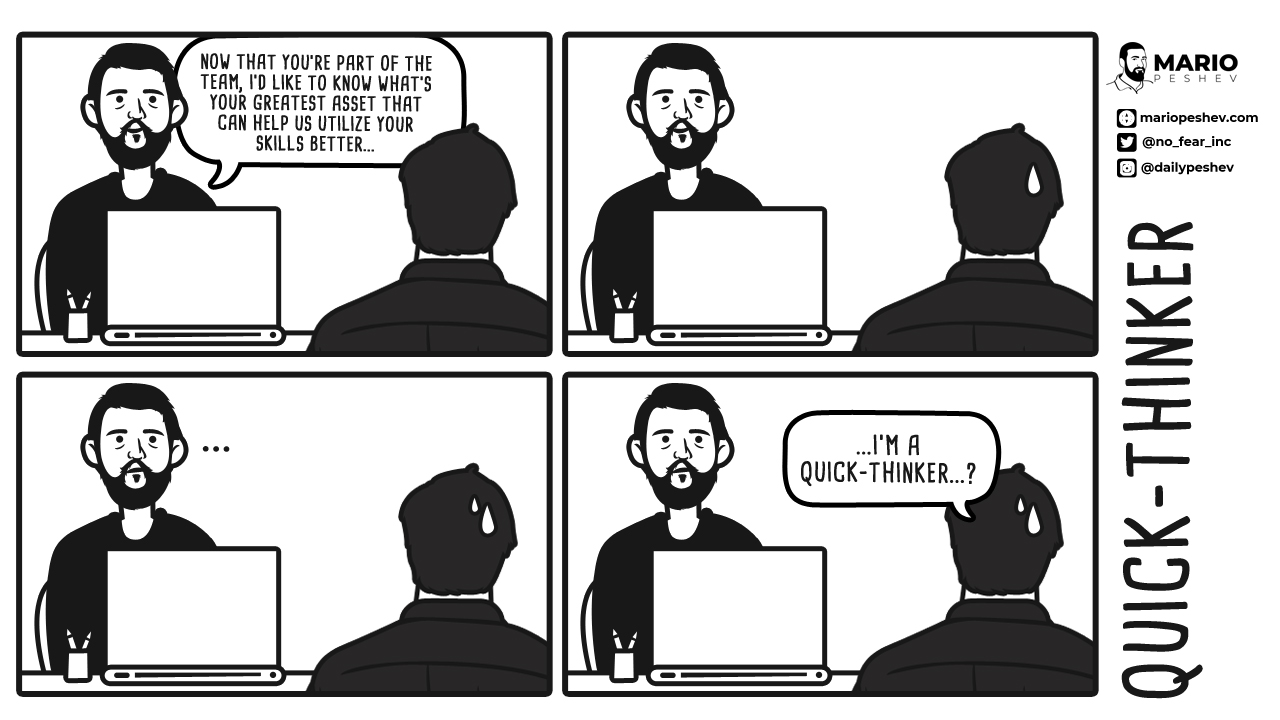
Onboarding Is Crucial To Reduce Hiring Costs
Since hiring is so expensive, it’s approached carefully. I try to simplify the recruitment process by hiring motivated people eager to solve problems, avoid cultural misalignments (and a toxic environment), and ensure everyone can learn on the job.
Here are 5 reasons why you should establish a solid recruitment process:
- Finding great talent nowadays is extremely hard.
- Recruitment and onboarding costs are very high.
- Communication overhead caused by new hires may lead to a multitude of problems.
- More people result in additional management overhead as well – or hiring more managers to handle and distribute the workload.
- Business meetings will likely require additional costs for business trips or time allocated for multiple stakeholders within the organization.
The risks and challenges that come with hiring are worth all the trouble if you boost recruitment then it turns out to be efficient. The key is in handling your hiring process and using onboarding best practices from start to end.
Employee Onboarding Checklist
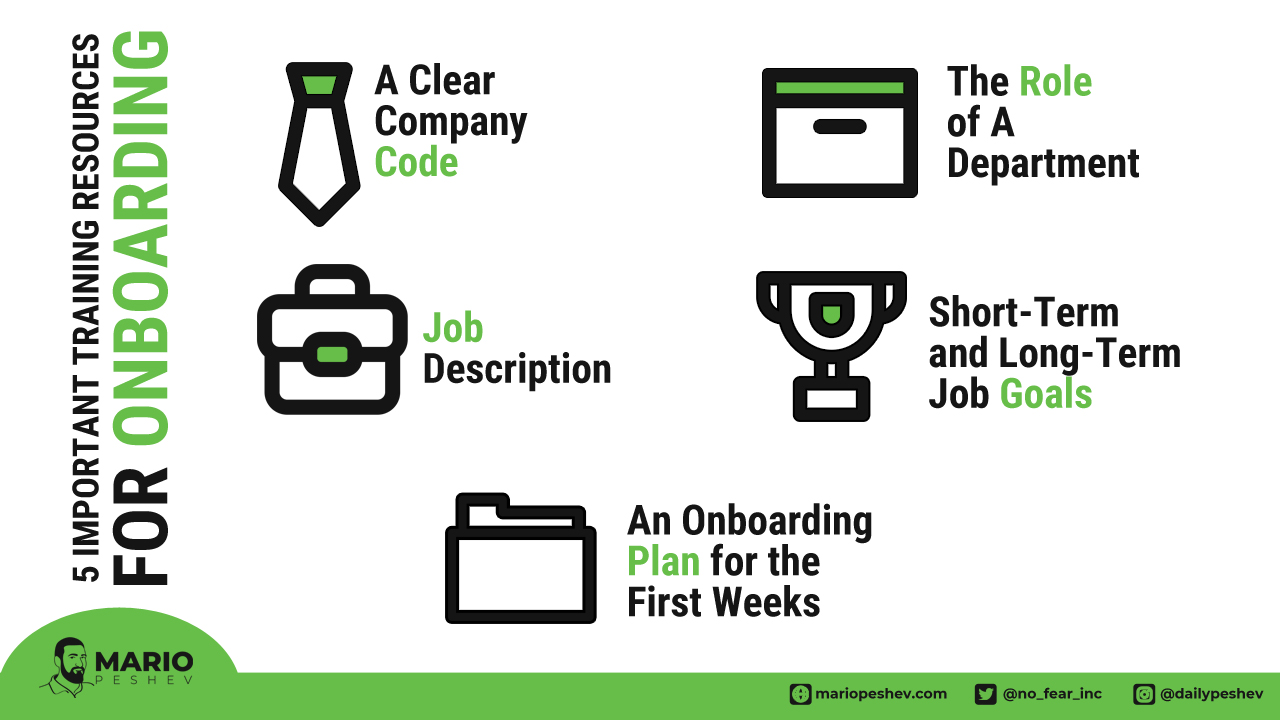
Dive into my onboarding template for training new recruits and preparing your management team to handle the process seamlessly.
1. A Clear Company Code
Keeping a company handbook defining the high-level goals of the business is important. Revealing the cultural specifics for new team members will help them align in the best way possible.
Even experienced workers realize the difference when switching to a new department. A different hierarchy, reporting mechanisms, expected outcomes, and tools, to name a few.
Your company code would be the guiding light during the onboarding process.
If you’ve read “Traction”, you’re probably familiar with the Entrepreneurial Operating System. One of the key pillars of Traction is “focus” — having all parties clearly aligned on the right track, following the company goals closely, and executing clearly on the objectives.
Your new hires come from a different background (or at least different business processes and workstyle compared to your company). Ensuring that they are familiar with the high-end objectives, the core reasons the company exists in the first place, and what executives value in recruits will make them productive sooner, and boost employee motivation levels (preventing disappointment in the early weeks).
Work on your company code early on. If needed, gather with the rest of your executive team over a weekend and clear out the top-level reasons why your business exists.
Draft them down and employ them in the onboarding process. This makes all the difference for new hires, especially when you clearly state that this code isn’t just for the sake of existence but actually matters to each and every person on the team.
2. Job Description
A job description that actually matches the hire’s responsibilities isn’t as easy to find.
Most job descriptions are somewhat generic (or simply “wishful thinking”).
- Hiring a QA expert for “automation” may still mean conducting tons of manual testing.
- Hiring a PHP developer may be applicable in both a service-based context and a product build. Both categories operate differently, especially when you consider funded vs. bootstrapped and R&D vs. maintenance teams.
- Hiring an SEO expert may dabble into keyword research or refining on-site HTML elements for better ranking. It could go both ways.
Sure, jobs evolve over time. Bouncing between “What you actually do”, “What you’re supposed to do” and “What you’re expected to be doing a year from now” may be confusing.
How closely is your job description aligned with the specifics of the job?
I’ve been guilty as charged myself. Recycling an old job description for a hire and facing awkward conversations during the interview cycle.
Instead, make sure that your job description is up to date before looking for the next teammate.
Clearly define what they are supposed to do on the job.
- Are they going to be in charge of the company’s blog? Clearly state that.
- What’s coming on the roadmap 6 months from now? The new hires should be prepared for the new initiatives you will be undertaking.
- Will they spend 20% of their time on support? Some interviewees enjoy that while others dread it. Clear it out as early as possible.
Shaping your job description as an actual resource that hires can follow over the first months will support your hiring goals (especially during the onboarding weeks).
3. The Role Of A Department In The Company
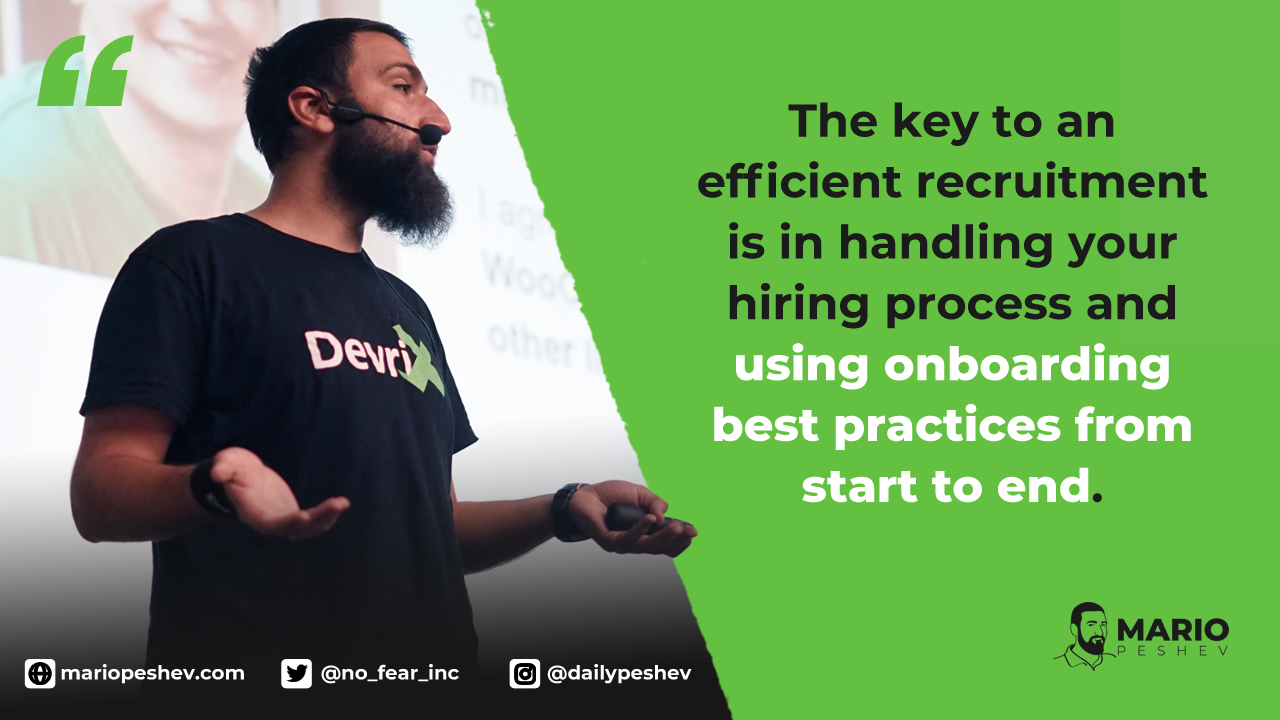
What is the actual purpose of a department in the organization?
I’ve seen marketing experts coming from marketing agencies joining product companies. The transition is staggering and hard to swallow.
Explaining the actual goals of a particular department, along with the ongoing activities, can be beneficial for your new team members.
Before you even consider the onboarding process, clear out the function of the department within the organization.
- Is this a money-generating department like sales or business development?
- Is this a supportive function of the organization like accounting or legal?
- Will the hire join the bread and butter of the business, the team where the actual magic happens?
Let’s take Google as an example.
The parent company, Alphabet, manages a number of large companies. And each one (Google included) employs thousands or tens of thousands of software engineers.
Each of them works in a separate department — search, ads, display, Gmail, Calendar, or any other product and sub-product you can think of.
While a recruit may be excited to join the special team working on the search engine, odds are they will join a less exciting team first. But for some, the less exciting team can be exhilarating. Describing their day-to-day job during the interview process will set the record straight and align the expectations accordingly.
4. Short-term And Long-term Job Goals
One of the leading misalignments between new hires and their teams is goal-setting.
What are the quick wins that a hire is expected to land? What are the long-term traits they need to develop to be successful in the job?
This document can include additional details regarding the traits your managers possess. In terms of promotion opportunities, this will be a good onboarding indicator of what your company values in your top talent.
CMOs have faced a lot of backlash over the past 5 years due to the inability to follow both short-term and long-term goals. Some marketing executives have focused too much on quick wins without following the long-term roadmap requirements. Or they have been laser-focused on the annual objectives without making it through the first quarter.
It’s no different for other roles, though. You may tolerate a slow hire for a couple of months and find yourself managing an A-star player once they “get it”. Or someone may indicate all the right traits during the first 2 months and suddenly stop right where they were for the next 5 months.
Setting short-term and long-term goals right before your onboarding process will be the guiding light for new hires. This would facilitate the need for performance improvement plans (if needed) or keep them straight during feedback iterations.
5. An Onboarding Plan For The First Weeks
A great starter plan is a wonderful way to save your seniors some time while onboarding your hire properly.
Going through sample scenarios, reading projects or product docs, and solving some simple (basic) starter problems can shape the sense of purposefulness at the beginning of the relationship.
This list is not extensive and it’s rare to find in practice (the complete one at least). But you can’t go wrong by preparing these resources for your new hires. It sets the expectations for your management staff, too.
As for handing access, there are different ways to make it work.
- With G Suite, you can authorize only users signing in with your company email (really easy to deactivate as needed).
- Or set up 2FA to a company-owned phone (or email again).
- Or require VPN-protected access acting as a gateway.
But eventually, most of those concerns can be mitigated with the right recruitment and onboarding process.
Defining Your Onboarding Plan
If new team members require a lot of handholding, the problem can be in your recruitment process or the lack of documentation/processes. Either prepare a better checklist for finding talent or work on a well-defined onboarding plan.
Make sure that your projects are well-documented (well, as best as possible).
Involving multiple team members from different departments in a project may cause some friction, too.
Responsibilities aren’t clear. These members aren’t used to working together as a team.
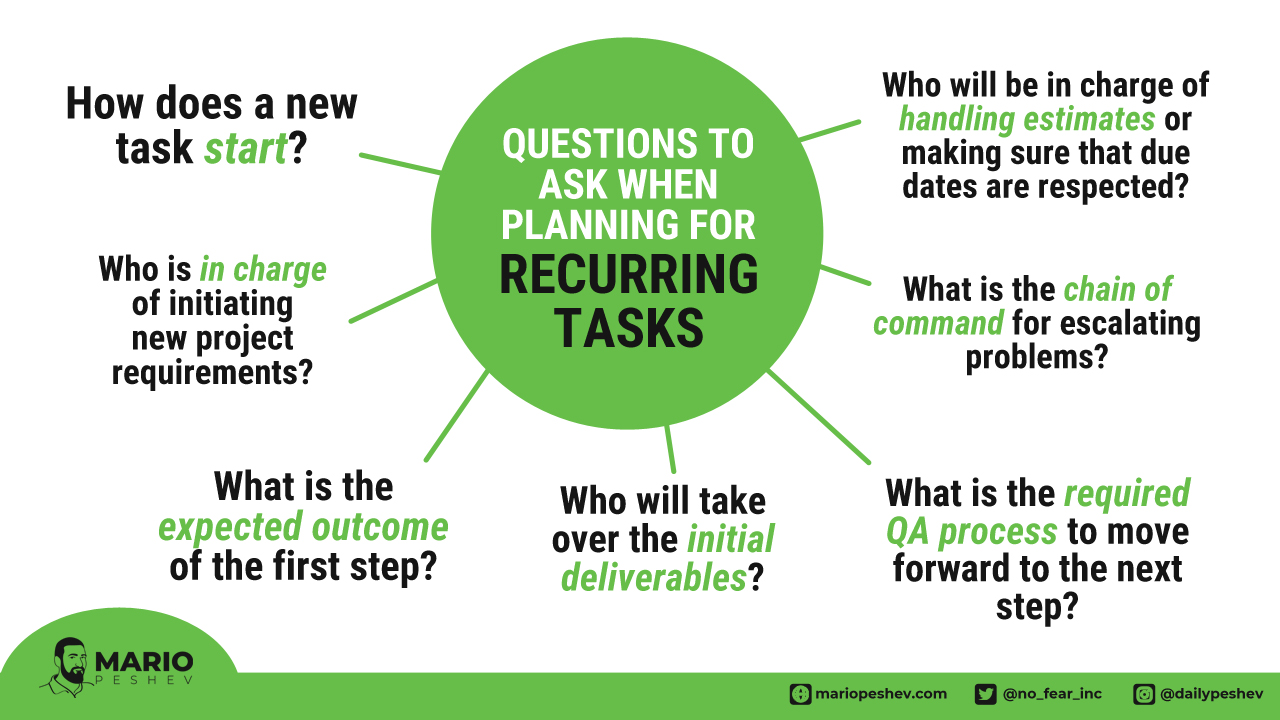
The business objectives are vague and the collaboration is struggling. New processes are required for recurring tasks:
- How does a new task start?
- Who is in charge of initiating new project requirements?
- What is the expected outcome of the first step?
- Who will take over the initial deliverables?
- What is the required QA process to move forward to the next step?
- What is the chain of command for escalating problems?
- Who will be in charge of handling estimates or making sure that due dates are respected?
Business process management tools can be of great help here.
How To Incorporate Online Onboarding Best Practices
Online onboarding is usually applied in two common contextual scenarios:
- Hiring a remote team member
- Handing virtual materials to a new hire at the office
This is especially valid in times of pandemic – and millions of businesses had to switch to remote hiring overnight.
Remote team members will require formal onboarding (regardless of their former experience). Even the most senior team members will take a while to study the new hierarchy, processes, onboarding best practices, expectations, etc.
The training process will likely represent training materials and mentoring from a team member. Online mentoring will include video calls, screen sharing, maybe even pairing both team members together to understand better the day-to-day operations.
Virtual Training Resources
Online resources are commonly referred to as documentation, training courses, initial assignments, and internal training projects.
Virtual training resources are common in the workplace, too.
Assigning a full-time mentor per new staff member isn’t scalable. If you hire 5 members in a given team, you’ll need five senior experts to work closely with each of your new employees. This gets expensive soon enough (if possible at all).
The job requirements are a combination of different traits that a new team member should get acquainted with:
- Hard skills (additional competencies to be efficient on the job)
- Internal processes and workflows
- Project or product documentation
- Company hierarchy or chain of escalation
- Others
In most cases, you can find initial training resources for the hard skills required for the job.
That’s not to say that you need to hire junior folks all the time. They lack other skills related to teamwork or fully executing complex tasks.
But even experienced team members may need to study a new framework or platform. Courses on LinkedIn Learning or Coursera or edX or any other platform may be a great starting point.
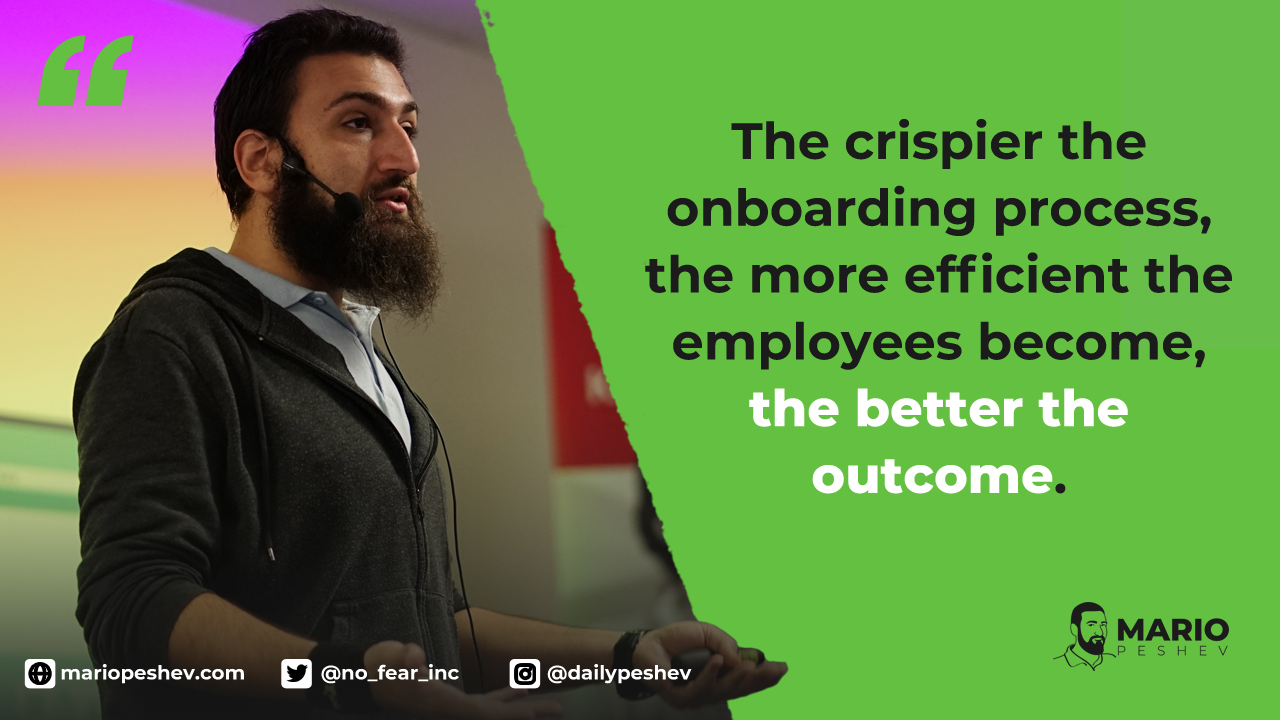
Onsite Internal Processes
Internal processes and workflows should be documented properly. You can start with an initial set of Google Docs documents and write down everything that a new hire should know. We have designed an entire handbook for new hires that covers the organizational goals, what are different teams responsible for, and how to apply for a vacation leave, to name a few.
Every team has a separate onboarding document as well, along with initial exercises for new hires (including basic training in our project management system and Slack).
Working with an on-site member is always recommended. It’s teamwork after all. But limiting the regular, repetitive activities by compiling helpful resources to get started can drastically reduce the error levels at first and improve the onboarding experience for new talent.
Project management systems are suitable for smaller service or product companies, too.
How to Scale Hiring
Establishing solid processes is really important for scaling. Once you stop hiring a couple of people a year and need to employ hundreds or even thousands, you scale hiring fast, and with that, you need bulletproof onboarding.
I believe that you can easily get to 10-20, sometimes 30-50, MAYBE ~100 of top hires who are top individuals, self-aware, entrepreneurial, and the like. It simply isn’t how people perceive work in general and finding them at scale is impossible.
Once you’re past this volume, you have to integrate an onboarding process for new hires.
The crispier the training plan, the more efficient your fresh employees become, the better the outcome. And with time, a reliable employee, who is a product of a solid onboarding process, may very well become an irreplaceable unit of the organization.
The Bottom Line
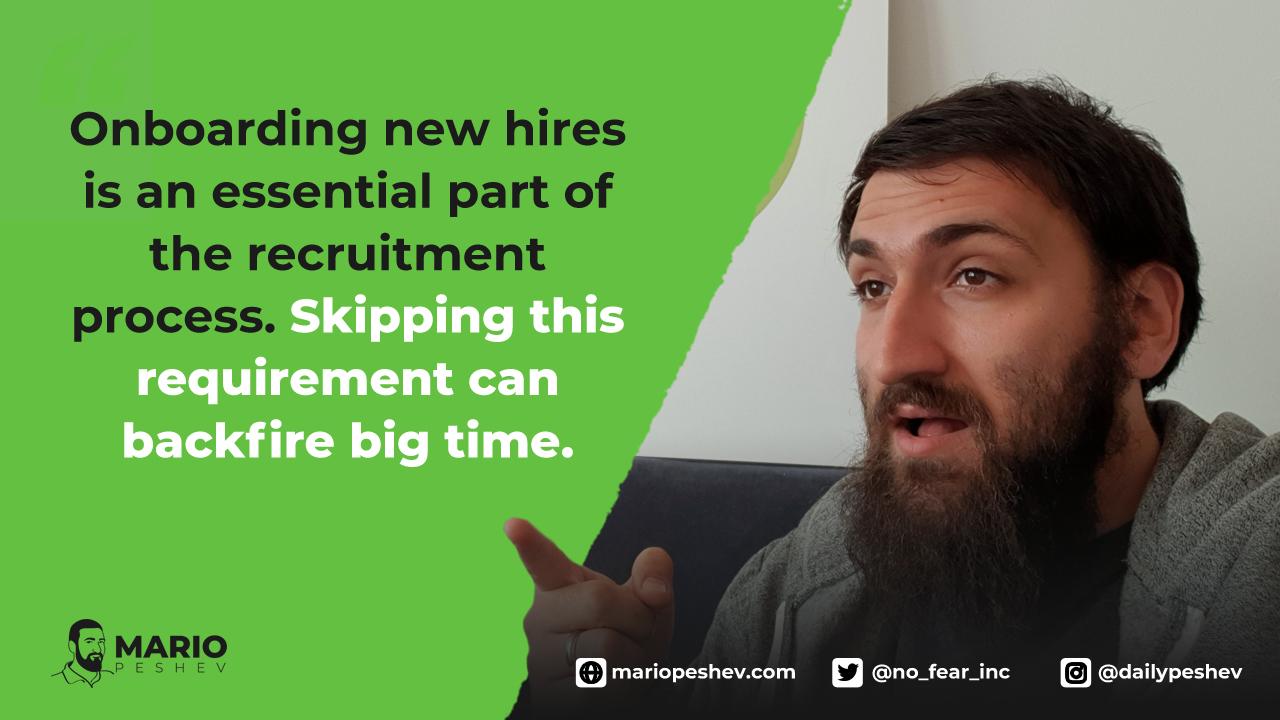
There is no universal employee onboarding process that works for all, but these onboarding best practices should help tremendously. The success of the entire onboarding process depends on your team, your management style, the duration of your sprints, how many activities you juggle simultaneously, and how many departments are involved in the process.
Make a note of documenting all problems and revising them regularly. Establishing a pattern will help figure out how to automate onboarding or design an easy-to-follow process.
Look into how other peers in the industry have built their teams as well. It may give you an insight into whether you need additional management, an HR person full-time (or a legal expert), and how big each team is. It will still require some trial-and-error but it’s a part of the learning cycle.
Through proper documentation, the orientation of new employees with regard to each type of activity within the organization becomes more streamlined.
You may use a knowledge management system, or a wiki, among others, in each department. Information on fundamental company processes could be included in your onboarding manual or provided every step of the way (being easier to grasp).
Businesses that use these employee onboarding best practices can benefit from a recruitment process that ensures employee efficiency and return on investment.
Yes, hiring new employees comes with risks every time. But, as long as you don’t compromise the recruitment process by failing to employ a well-defined onboarding plan that is a product of thorough planning and collaboration among key players of every department, then scaling your business further becomes easier.
Are You Prepared to Scale Your Business?
Aside from the aggressively growing funded startups, I’ve met a number of entrepreneurs completely obsessed with rapid hiring.
And I’ve seen it failing a lot more often than not. Why?
Shane Pearlman, a founder at Tribe, spoke about his first hire years ago during a conference talk. To summarize his onboarding experience, the first months demanded 8 hours a day in training and mentoring and 8 hours in actually getting the job done during the onboarding process for the first hire.
Even if you scale past the early days to 10-20 people, aggressive hiring means 50% more, 2x, 3x your team year over year.
If your goal is to create the perfect onboarding experience for your new hires, you may also want to check these employee onboarding software reviews.
You skip essential requirements in your recruitment process, allocate most of your staff’s time to onboarding, and can’t maximize talent early enough.
And this can backfire big time – unless you use this onboarding template to successfully train your employees in no time.
What are the most notable scaling failures you’ve faced over the years?

